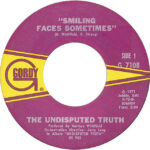In the annals of rock history, few albums are as legendary – or as steeped in personal drama – as Fleetwood Mac’s Rumours. The recording process itself was a pressure cooker, with the romantic relationships of Stevie Nicks and Lindsey Buckingham, and Christine and John McVie, dissolving amidst the creative process. It was during this fraught time in 1976, while attempting to work on new material in a rented Florida house, that Lindsey Buckingham penned “Go Your Own Way,” a quintessential Fleetwood Mac Song born from the ashes of heartbreak and band turmoil.
A House with Bad Vibes and Brewing Breakup Anthems
Mick Fleetwood himself described the Florida house as having a distinctly “bad vibe,” an unsettling atmosphere that mirrored the unspoken tensions within the band. This backdrop of unease became the unlikely birthplace of a song brimming with raw emotion. For Buckingham, the house was the setting where his anger and frustration over his impending split with Stevie Nicks found their voice. “Go Your Own Way” became his outlet, a musical manifestation of their unraveling relationship.
From Anger to Anthem: The Sound of “Go Your Own Way”
Buckingham didn’t just channel his emotions into the lyrics; he infused them into the very fabric of the song’s sound. Recalling the hard-driving rhythm of The Rolling Stones’ “Street Fighting Man,” Buckingham envisioned a departure from Fleetwood Mac’s earlier, softer rock inclinations. He aimed for something more aggressive, more urgent. The result was a track propelled by an “inverted stomping drumbeat” – as Buckingham described Mick Fleetwood’s interpretation – and a taut, assertive guitar riff. This sonic aggression marked “Go Your Own Way” as a bold step forward for the band.
Chart-Topping Success and Lingering Wounds
Released as the lead single from Rumours, “Go Your Own Way” was an immediate hit, storming into the Top 10 and solidifying its place as a Fleetwood Mac signature song. Night after night, it became their set-closing powerhouse, ironically reigniting the very drama that fueled its creation. For Stevie Nicks, performing the song was a nightly reminder of Buckingham’s lyrical barbs. Years later, she recounted to Rolling Stone her deep resentment of the lines suggesting her promiscuity, feelings that intensified with every performance. Despite the personal sting, “Go Your Own Way” remains a testament to Fleetwood Mac’s ability to transmute personal pain into timeless music, a Fleetwood Mac song forever etched in rock history.

